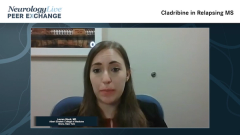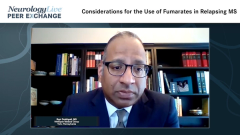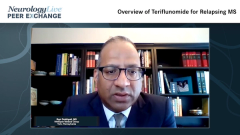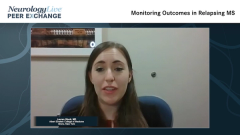
Monitoring Outcomes in Relapsing MS
Lauren Gluck, MD discusses considerations for monitoring response to treatment in relapsing multiple sclerosis.
Episodes in this series

Fred D. Lublin, MD: Let’s move onto a new section: sequencing therapies. What we want to discuss is monitoring the patient response to the initial therapy. When do you think it’s time to switch? This is going to be opinion-based discussion because there aren’t a lot of data to support this. Let’s talk about this, monitoring once you’ve started someone on treatment. Lauren, why don’t you kick this off, and then we’ll let Gavin talk about sequencing. But just in your practice.
Lauren Gluck, MD: Sorry. In terms of monitoring, or in terms of…?
Fred D. Lublin, MD: Yes, monitoring once you start treatment.
Lauren Gluck, MD: All of the different drugs come with many different monitoring guidelines. That’s something that you have to be very up front with the patients about. For example, there’s the screening ahead of time, you should be able to say, “I’m drawing blood from you today.” And with things like S1Ps [sphingosine-1-phosphates], “you have to do this as a kind of cost-sharing.” That’s what monitoring requires as well. From from the most benign end, something like glatiramer doesn’t have any actual guidelines to monitor anything, but there are rare cases of hepatotoxicity, so it’s not unreasonable to check liver tests, and CBC [complete blood count] once in a while, in a year or 2 years. With interferons, obviously, you have to check other blood tests, but this carries over to different drugs.
As I’m speaking, I think a lot of our discussion is guiding me toward what sort of things I monitor to see the drug’s effectiveness, and that is a clinical examination, listening to the patient’s history. When we talk about EDSS [Expanded Disability Status Scale], we look at the patient in the office, and particularly, their walking. MRIs are very useful. Clinically and commercially, we have lower-grade MRIs so we can count the number of T2 chronic lesions, if any have developed in interval periods. We look at new contrast-enhancing lesions, particularly for patients who are newly starting medications within 6 months, and a year later. There are different software programs we can use to estimate whole brain volume that can be useful too. All of those things can be taken into account, in addition to some not immediately neurology-focused things—like sending patients to our ophthalmology colleagues for OCTs [optical coherence tomography images], which measure retinal fiber layer thickness to see if there’s any subclinical change in the optic nerves. We can send them to our neuropsychology colleagues. There are even neuropsychology batteries available commercially through tablets, through computer technology, that can estimate the cognitive side of things, which can sometimes be overlooked.
Fred D. Lublin, MD: Thank you all for watching this NeurologyLive® Peer Exchange. If you enjoyed the content, please subscribe to our e-newsletters to receive upcoming Peer Exchanges and other great content right in your inbox. Thank you for joining us.
Transcript Edited for Clarity
Newsletter
Keep your finger on the pulse of neurology—subscribe to NeurologyLive for expert interviews, new data, and breakthrough treatment updates.
















































